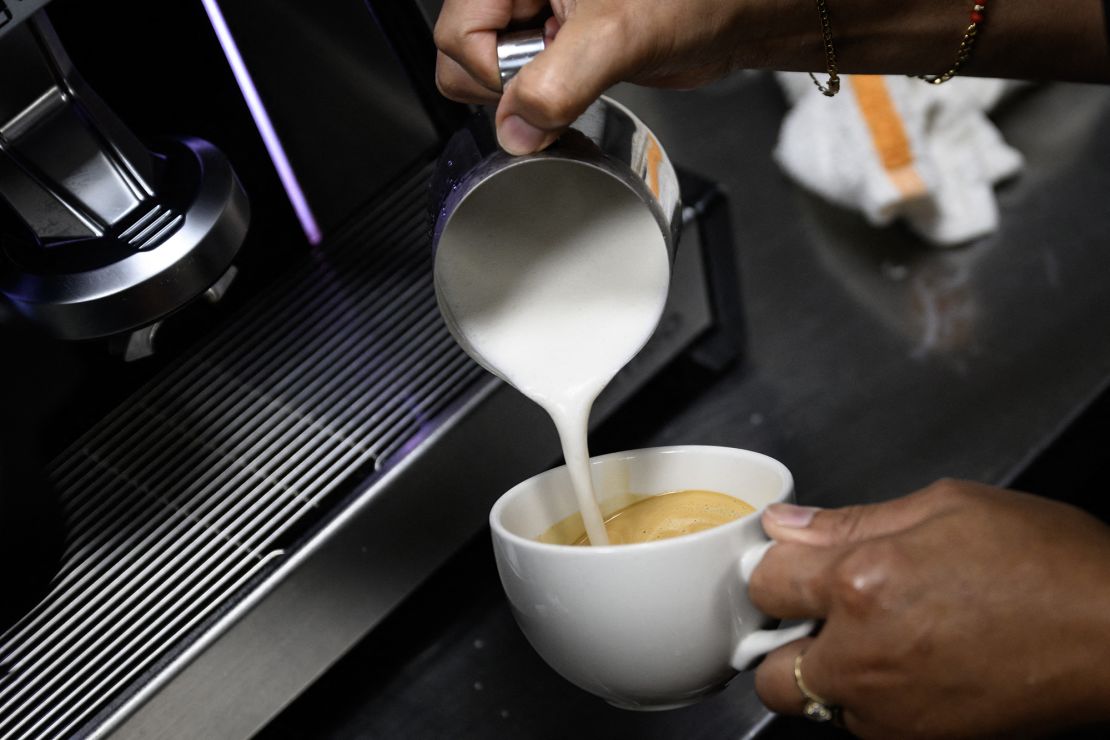CNN
—
Many economists already believe it’s a matter of time before Americans start to see sticker shock from the tariffs President Donald Trump has enacted. That timeline could speed up even more if Trump follows through with his latest package of tariff threats slated to take effect in three weeks.
For the past three months, most imported goods have been subject to a minimum 10% tariff after Trump paused his “reciprocal” taxes on dozens of nations. And steel, aluminum, cars and car parts from across the globe have been subject to separate levies starting at 25%, in most cases.
Then, earlier this week, Trump sent dozens of letters to a variety of longtime US trading partners informing them that they could soon face tariffs ranging from a minimum of 25% all the way to a whopping 50%. And, in an NBC News interview that aired Thursday, Trump suggested hiking blanket tariffs on most countries. Collectively, the tariffs Trump has threatened to enact on August 1 would mark the highest average tariff rate America has seen in over a century, according to multiple estimates.
Tariffs, which are taxes on imported goods, are paid upfront by businesses, who often pass on some of those costs to consumers by raising prices.
But, given that overall inflation has so far remained tame, even with the tariffs that are already in effect, Trump and administration officials have insisted there’s no reason to believe that any additional tariffs will cause goods to get significantly more expensive.
“The Administration has consistently maintained that the cost of tariffs will be borne by foreign exporters who rely on access to the American economy, the world’s biggest and best consumer market,” White House spokesperson Kush Desai said in a statement to CNN.
Earlier this week, the White House published a report finding that the price of imported goods has fallen since February. “These findings contradict claims that tariffs or tariff-fears would lead to an acceleration of inflation,” the report states.
However, in anticipation of higher tariffs, businesses have spent months stockpiling inventory. They’ve also been taking advantage of legal strategies that involve storing products in special warehouses and foreign trade zones, which allows them to delay tariff payments.
“These actions were always short-term fixes, and the opportunity to front-run the tariffs is ending. Thus, even without any further increases, the costs of the tariffs will be hitting the economy soon,” said Wayne Winegarden, a senior fellow and director at the Pacific Research Institute, a right-leaning think tank.
“Additionally, many companies have been willing to absorb the costs in the hope that the cost increases are temporary. But companies can only absorb the full cost of the tariffs for so long,” he added.
Coupled with the other August 1 tariff increases Trump has proposed, Americans could be looking at a lot of higher prices, he said.
Here are some of the goods that may be most vulnerable to price hikes:
The US imported $97 billion worth of oil and gas from Canada last year, that country’s top export to the US. The US has become more reliant on Canadian oil since the expansion of Canada’s Trans Mountain pipeline, according to data from the US Energy Information Administration.
Appliances, including dishwashers, washing machines, stoves and refrigerators, have already been getting more expensive, with prices rising by 0.8% in both April and May, the highest monthly increase in nearly four years, according to Consumer Price Index data.
China was the top source of foreign appliances shipped to the US last year, while South Korea was the third-top source. Collectively, both countries shipped $22 billion worth of appliances to the US last year, according to US Commerce Department data.
Goods from China currently face a minimum 30% tariff, while goods from South Korea are set to face a minimum 25% tariff on August 1. Other top foreign suppliers of appliances to the US, including Thailand, Malaysia and Indonesia, received letters from Trump subjecting their exports to the US to tariffs as high as 36% instead of the current 10%, as of next month.
And even appliances produced domestically won’t be immune to the impact of higher tariffs. That’s because steel and aluminum, which are heavily used in many appliances, already face 50% tariffs. And copper, which is also needed in many appliances, could soon face a 50% tariff, too.
Phones, computers and televisions
Since copper is used in electric wiring to power devices like televisions, computers and cellphones, the 50% tariff Trump threatened could make these goods more expensive to produce and repair domestically.
Additionally, many top countries that manufacture these goods Americans purchase are set to face higher tariffs compared to current rates.
And even though Vietnam, a top supplier of electronics, appears to have agreed to a trade deal framework with the US based on what Trump announced, tariffs on goods from there would go up to a minimum of 20% from the current 10% if the deal is finalized.
And if the copper tariff Trump were to impose applies to the copper used to manufacture these products abroad, that could also lead to price increases.
Clothing, shoes and accessories, including handbags and phone cases, are predominantly made overseas.
Goods from almost all the top countries producing them are due to soon face higher tariffs.
For instance, since April, average tariffs on women’s and men’s clothing have been 32% and 25%, respectively, according to an analysis conducted by the nonpartisan Tax Policy Foundation. Once the pause ends, those rates will rise to 48% and 39%, the think tank estimates, based on the president’s latest announcements.
Meanwhile, average tariffs for purses will rise from 23% to 38%, TPC estimates.
That doesn’t necessarily mean consumers will see clothing and purse prices go up by the same percentages, since businesses tend to absorb a portion of the tariffs they pay rather than fully pass it on to consumers.

While overall the US exports more to Brazil than it imports, much of the coffee Americans drink comes from beans grown in Brazil.
That’s because coffee requires a tropical environment to grow in, which means there are few options within the US.
Coffee prices, which have already been rising this year, would likely get much higher if Trump tariffs goods from Brazil at a minimum of 50%. Brazil has been the top foreign supplier of coffee and coffee products to the US for several years, according to US Department of Agriculture data.

